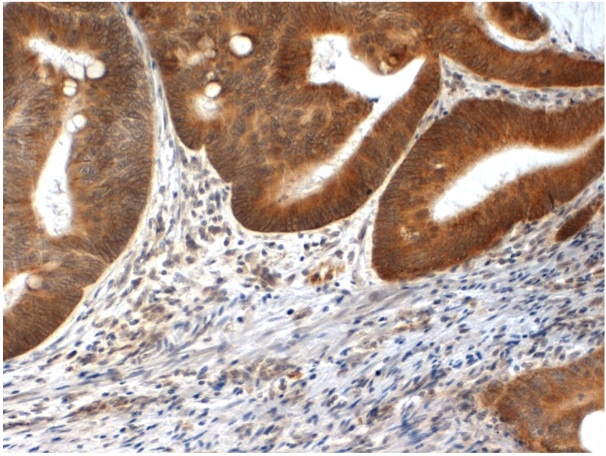Catalogue

Rabbit anti Human PINK1 (N-Terminal)
Catalog number: X2759P| Isotype | IgG |
| Product Type |
Antigen Immunoaffinity Purified Polyclonal |
| Units | 100 µg |
| Host | Rabbit |
| Species Reactivity |
Human |
| Application |
Enzyme Immunoassay Immunohistochemistry Western Blotting |
Background
Protects against mitochondrial dysfunction during cellular stress, potentially by phosphorylating mitochondrial proteins. Involved in the clearance of damaged mitochondria via selective autophagy (mitophagy). It is necessary for PARK2 recruitment to dysfunctional mitochondria to initiate their degradation. Defects in PINK1 are the cause of Parkinson disease type 6 (PARK6). A neurodegenerative disorder characterized by parkinsonian signs such as rigidity, resting tremor and bradykinesia. A subset of patients manifest additional symptoms including hyperreflexia, autonomic instability, dementia and psychiatric disturbances. Symptoms show diurnal fluctuation and can improve after sleep.
Synonyms: PTEN-induced putative kinase protein 1
Source
Immunogen: Synthetic peptide derived from the N-terminal of the human PINK1 protein.
Product
Product Form: Affinity Purified
Formulation: Provided as solution in phosphate buffered saline with 0.08% sodium azide
Purification Method: Antigen Immunoaffiinity Purification
Concentration: See vial for concentration
Applications
Antibody can be used for immunohistochemical staining (1-5 µg/ml). Optimal concentration should be evaluated by serial dilutions.
Functional Analysis: Immunohistochemistry
Storage
Product should be stored at -20°C. Aliquot to avoid freeze/thaw cycles
Product Stability: See expiration date on vial
Shipping Conditions: Ship at ambient temperature, freeze upon arrival
Caution
This product is intended FOR RESEARCH USE ONLY, and FOR TESTS IN VITRO, not for use in diagnostic or therapeutic procedures involving humans or animals. It may contain hazardous ingredients. Please refer to the Safety Data Sheets (SDS) for additional information and proper handling procedures. Dispose product remainders according to local regulations.This datasheet is as accurate as reasonably achievable, but Nordic-MUbio accepts no liability for any inaccuracies or omissions in this information.
References
1. Matsuda, N., et al. ‘PINK1 stabilized by mitochondrial depolarization recruits Parkin to damaged mitochondria and activates latent Parkin for mitophagy.’ J. Cell. Biol., 189, 211-221 (2010)
2. Vives-Bauza, C., et al. ‘PINK1-dependent recruitment of Parkin to mitochondria in mitophagy.’ Proc. Natl. Acad. Sci. USA, 107, 378-383 (2010)
3. Valente, E.M., et al. ‘PINK1 mutations are associated with sporadic early-onset parkinsonism.’ Ann. Neurol., 56, 336-341 (2004)
4. Song, S., et al. ‘Characterization of PINK1 (PTEN-induced Putative Kinase 1) Mutations Associated with Parkinson Disease in Mammalian Cells and Drosophila.’ J Biol Chem. 288(8): 5660-5672, (2013)
Protein Reference(s)
Database Name: SwissProt
Accession Number: Q9BXM7
Species Accession: Human
Safety Datasheet(s) for this product:
| NM_Sodium Azide |

Immunohistochemical staining of FFPE human colon carcinoma tissue using PINK-1 (NT) antibody (Cat. No. X2759P). Antibody used at 1 µg/ml and visualized using DAB. Pathologists Comments: Cytoplasmic and partial nuclear staining of mucous cells.

